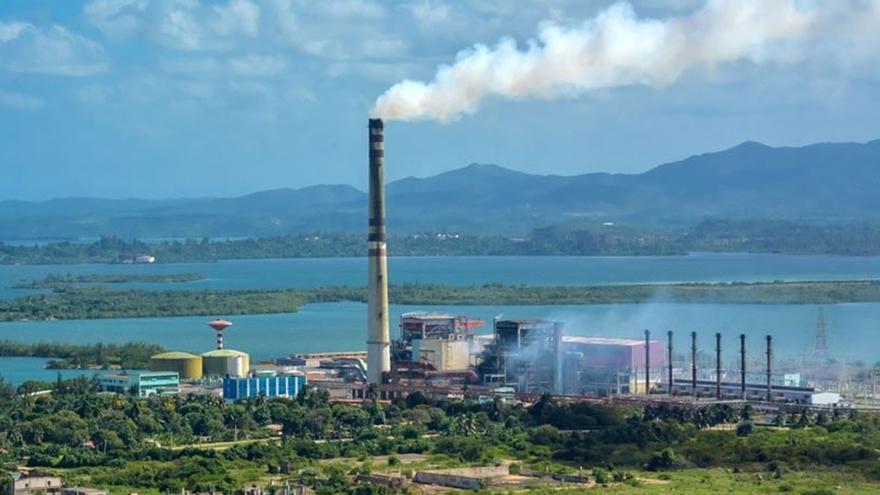
![]() 14ymedio, Havana, 8 August 2022 — The Antonio Guiteras Thermoelectric Power Plant, which operates in the city of Matanzas, left the National Electricity System, as confirmed by the authorities, Monday afternoon, causing a loss of 1,246 MW and ensuring the programming of more blackouts. “The unit ran out of sufficient water supply to stay in operation,” the Matanzas government reported on its social networks.
14ymedio, Havana, 8 August 2022 — The Antonio Guiteras Thermoelectric Power Plant, which operates in the city of Matanzas, left the National Electricity System, as confirmed by the authorities, Monday afternoon, causing a loss of 1,246 MW and ensuring the programming of more blackouts. “The unit ran out of sufficient water supply to stay in operation,” the Matanzas government reported on its social networks.
Local authorities also explained that “water is supplied by pipe to the plant and pumped,” but still “it’s not enough to keep it running, so it had to be shut down.” The Guiteras thermoelectric plant has been affected by the fire that began this Friday in the industrial area of Matanzas, after a lightning strike, according to the official version, started a fire in one of the fuel tanks and has already spread to two other tanks.
“Its return to the grid isn’t expected for the hour of maximum demand,” the Electric Union of Cuba (UNE) warned, while insisting that the recovery of the thermoelectric plant “will depend on the disposition of water levels,” although in another statement it said that “about 12 hours are needed for it to start up again. However, actions are already being taken to reduce this time.”
However, the supply of water will take longer than expected, the authorities acknowledged, due to the taps in the thermoelectric plant, which demand a greater supply than usual.
The UNE also reported that due to the exit of the Matanzas plant “it was necessary to decrease 200 MW to Havana, and the restoration of this load will depend on the conditions of availability of the National Electricity System.”
Last Saturday, 12 hours after the explosion, the Government had announced that the thermoelectric plant, located about 10 kilometers from the Matanzas Supertanker Base, had fuel to operate for two days, since pumping from there had been suspended to the largest Cuban power plant.
The UNE predicted blackouts that day due to a deficit of 35% of demand, which was maintained until Monday when the Guiteras plant had to shut down.
Power outages, due to failures and breaks in outdated thermoelectric plants and lack of fuel and scheduled maintenance, are increasingly frequent in Cuba. In July, blackouts were recorded in 29 of the 31 days, according to UNE data.
The situation, which weighs down all areas of the economy and significantly affects daily life, has fueled social discontent, and several protests have been reported throughout the island.
Last year, blackouts were one of the reasons behind the anti-government protests of July 11, the largest in decades, in the opinion of analysts.
Cuba relies heavily on foreign oil to produce energy (thermolelectric plants generate two-thirds of the electricity), and its main supplier, Venezuela, has significantly decreased its shipments.
Translated by Regina Anavy
____________
COLLABORATE WITH OUR WORK: The 14ymedio team is committed to practicing serious journalism that reflects Cuba’s reality in all its depth. Thank you for joining us on this long journey. We invite you to continue supporting us by becoming a member of 14ymedio now. Together we can continue transforming journalism in Cuba.
